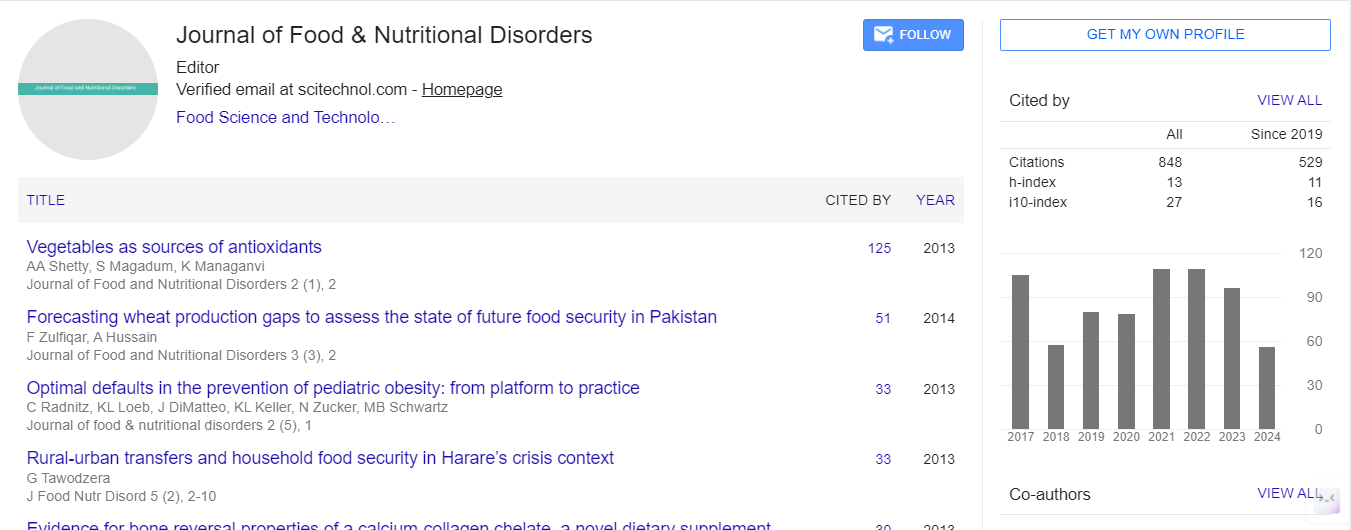Binge eating disorder and compulsive/emotional overeating in men and women: An overview of predisposing, precipitating and perpetuating factors and gender differences in clinical conceptualization and psychotherapy
Genziana Lay
clinical psychologist/psychotherapist, private practice, Sassari, Italy
: J Food Nutr Disor
Abstract
Binge-eating disorder (BED) and compulsive/emotional overeating (CEO) both involve an unhealthy relationship with food that has little to do with hunger- they are conditions wherein a person feels unable to control episodes of excessive, disorderly food intake, resulting in a sense of shame, powerlessness, discomfort and serious health risks. They are characterized by a constellation of symptoms related to emotional regulation, selfimage, addiction and maladaptive behavior. BED is often associated with addiction-related patterns, depression, emotional dysregulation and self-esteem issues. Eating disorders (EDs) have traditionally been associated with a high-risk young, Western female population. This perception, however, is increasingly challenged as globalization and industrialization foster a higher incidence of EDs in non-Western nations (particularly Asian) and as epidemiological research highlights that the disorders are more prevalent in males than previously believed. This paper provides an overview of predisposing, precipitating and perpetuating factors of BED and CEO in both men and women, with particular attention to gender differences in clinical conceptualization of cases and therapeutic approaches. While there is clearly common ground, women frequently appear to be negatively influenced by family dynamics related to food and relationships as well as by media-driven pressure, while men are deeply affected by social expectations regarding masculinity, performance and emotional control. Men are more reluctant to seek treatment and suffer more social stigma with diagnosis. This study also discusses risk factors and warning signs that may be helpful for non-clinicians (such as nutritionists or coaches) to identify potential problems and refer clients for psychotherapy. The paper furthermore outlines an effective treating approach for the disorder which includes: individual assessment, cognitive restructuring (focusing particularly on beliefs on body image, self-esteem food and emotions), teaching attuned eating, work on self-image, self-esteem and body image (particularly utilizing creative/ art therapy approaches), and tailored nutritional/exercise counseling. The conceptualization and treatment are further exemplified through two recent case study reports (one male, one female) illustrating key issues and typical course of therapy.
Biography
Genziana Lay, M.eD, PsyD, CPsychol is a clinical psychologist and psychotherapist licensed in the United States, Italy and United Kingdom. She is currently in private practice, focusing on psychotherapy with individuals and couples with a range of presenting problems. Her expertise includes issues related to trauma/violence, eating disorders, integrated and creative therapies, and post-traumatic stress. She also serves as honorary judge and expert in Juvenile Court in Sassari, Italy. In the past, she has worked in the United States in a university setting, in a public mental health facility, and as a member of numerous task forces. She has developed several therapy techniques and approaches she uses in her practice and has shared her expertise at multiple international conferences in recent years. doctoragl@yahoo.com
 Spanish
Spanish  Chinese
Chinese  Russian
Russian  German
German  French
French  Japanese
Japanese  Portuguese
Portuguese  Hindi
Hindi 
